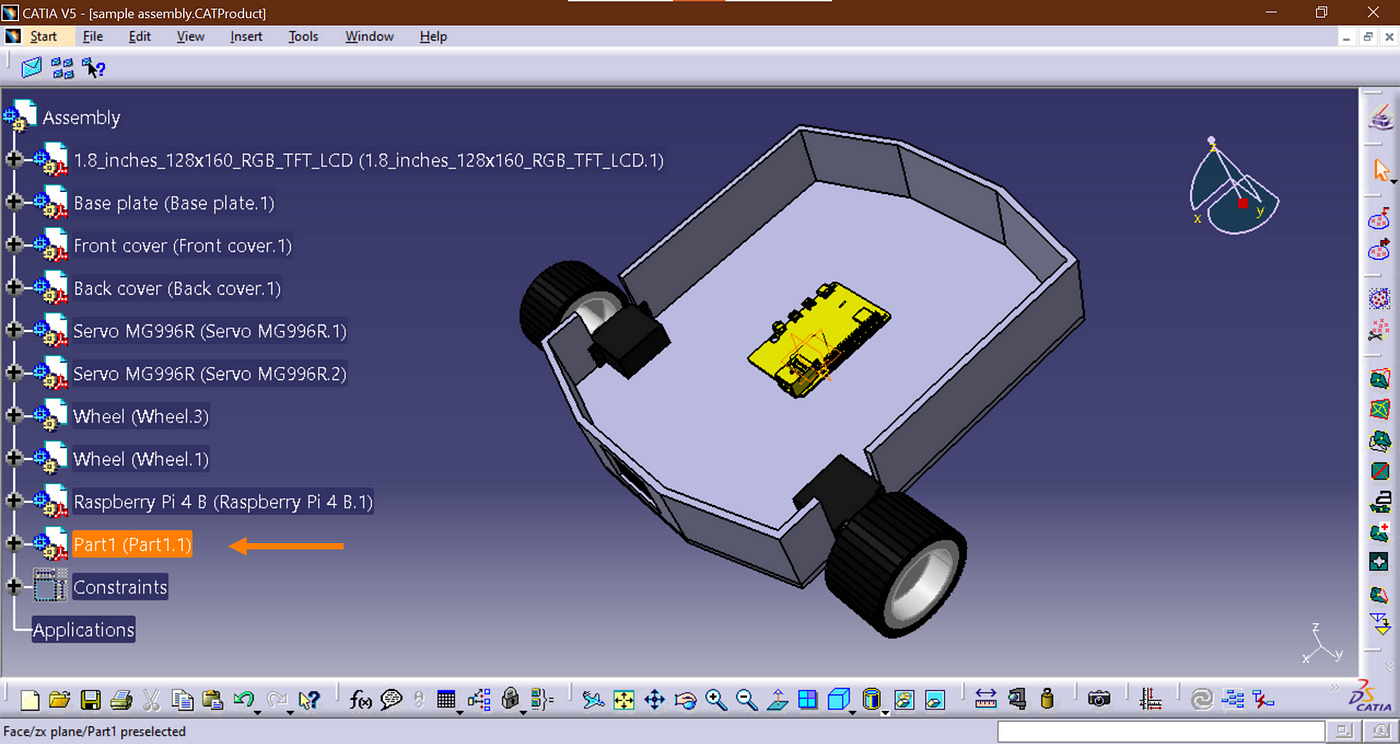
What makes CATIA a standout in the world of design and engineering software? CATIA, short for Computer-Aided Three-dimensional Interactive Application, is a powerhouse in the realm of CAD (Computer-Aided Design). Developed by Dassault Systèmes, this software is renowned for its versatility and robust capabilities. Engineers, architects, and designers across various industries rely on CATIA for tasks ranging from product design to complex simulations. Its ability to integrate with other systems and handle intricate projects sets it apart. Whether you're crafting a sleek car, an advanced aircraft, or a cutting-edge gadget, CATIA provides the tools needed to bring ideas to life. Dive into these 30 facts to understand why CATIA remains a top choice for professionals worldwide.
What is CATIA?
CATIA, short for Computer-Aided Three-dimensional Interactive Application, is a multi-platform software suite developed by Dassault Systèmes. It’s widely used in various industries for product design and engineering. Here are some fascinating facts about CATIA:
-
CATIA was first released in 1977 by Dassault Systèmes, a French software company.
-
Initially, CATIA was developed for the aerospace industry, specifically for designing the Mirage fighter jet.
-
The software is now used in multiple industries, including automotive, aerospace, shipbuilding, and industrial equipment.
-
CATIA supports multiple stages of product development, from conceptualization to manufacturing.
-
It allows for 3D modeling, which helps engineers visualize and simulate real-world performance.
Key Features of CATIA
CATIA is packed with features that make it a powerful tool for engineers and designers. Here are some of its key features:
-
CATIA offers advanced surface modeling capabilities, allowing for the creation of complex shapes.
-
The software supports parametric design, enabling users to make changes to a model by altering its parameters.
-
It includes tools for finite element analysis (FEA), which helps in stress testing and performance evaluation.
-
CATIA provides collaborative design capabilities, allowing multiple users to work on the same project simultaneously.
-
The software integrates with other Dassault Systèmes products, such as ENOVIA and DELMIA, for a seamless workflow.
Industries Using CATIA
CATIA’s versatility makes it a popular choice across various industries. Here are some sectors that rely heavily on CATIA:
-
The automotive industry uses CATIA for designing vehicles and their components.
-
Aerospace companies employ CATIA for aircraft design and simulation.
-
Shipbuilding firms utilize CATIA for designing ships and submarines.
-
The software is also used in the consumer goods industry for designing products like electronics and appliances.
-
Industrial equipment manufacturers rely on CATIA for creating machinery and tools.
Benefits of Using CATIA
Using CATIA offers numerous advantages for businesses and engineers. Here are some of the benefits:
-
CATIA improves design accuracy, reducing the likelihood of errors.
-
It enhances collaboration among team members, leading to more efficient project management.
-
The software allows for virtual testing, saving time and resources on physical prototypes.
-
CATIA supports customization, enabling users to tailor the software to their specific needs.
-
It helps in reducing the time-to-market for new products, giving companies a competitive edge.
Educational and Training Opportunities
Learning CATIA can open up numerous career opportunities. Here are some educational and training aspects:
-
Many universities and technical schools offer courses in CATIA.
-
Dassault Systèmes provides online tutorials and certification programs.
-
Various online platforms, like Coursera and Udemy, offer CATIA training courses.
-
Industry professionals often conduct workshops and seminars on CATIA.
-
Mastering CATIA can significantly enhance an engineer’s employability and career prospects.
Future of CATIA
The future of CATIA looks promising, with continuous updates and new features being added. Here are some insights into what lies ahead:
-
Dassault Systèmes is focusing on integrating artificial intelligence (AI) into CATIA.
-
The software is expected to offer more cloud-based solutions, enhancing accessibility.
-
Virtual reality (VR) and augmented reality (AR) capabilities are being explored for more immersive design experiences.
-
CATIA is likely to become more user-friendly, with a focus on improving the user interface.
-
The software will continue to evolve, keeping pace with technological advancements and industry needs.
The Final Word on CATIA
CATIA stands out as a powerful tool in the world of design and engineering. Its versatility, from aerospace to automotive, makes it a go-to for professionals. The software's ability to handle complex projects with precision is unmatched. Users appreciate its robust features, like 3D modeling, simulation, and collaboration tools. CATIA's integration capabilities streamline workflows, saving time and reducing errors. Its user-friendly interface, despite its complexity, allows for a smoother learning curve. Regular updates ensure it stays ahead of industry needs. Whether you're a seasoned engineer or a student, CATIA offers something valuable. Investing time in mastering this software can open doors to numerous opportunities. So, if you're serious about design and engineering, CATIA is worth exploring. Dive in and see how it can transform your projects.
Was this page helpful?
Our commitment to delivering trustworthy and engaging content is at the heart of what we do. Each fact on our site is contributed by real users like you, bringing a wealth of diverse insights and information. To ensure the highest standards of accuracy and reliability, our dedicated editors meticulously review each submission. This process guarantees that the facts we share are not only fascinating but also credible. Trust in our commitment to quality and authenticity as you explore and learn with us.
